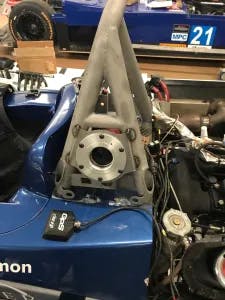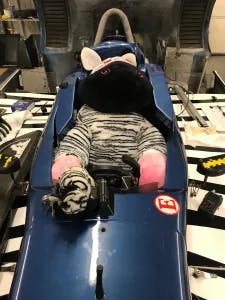2018 Racing: preseason jitterbug.
We need to stop fooling ourselves: fun is an important basic need. So in an attempt to apply this theory, I think I will keep a running blog on the 2018 racing season.


We need to stop fooling ourselves: fun is an important basic need. So in an attempt to apply this theory, I think I will keep a running blog on the 2018 racing season. Because it doesn’t do any of us any good to just dwell on things that suck. So let’s just not do that for a bit.
This is going to be season 5 for me in IMSA. As usual, I promised the family that last year was the last year (I did the same the year before. And the year before that). And it would be, it really should be. Out of 7 races I made it to last year, 4 ended in the first 2 laps, and one of those with subsequent ridicule on Fox Sports (Salmon upstream? Really? That joke is so yesterday…)
But this year is looking to be made to order, and I just can’t help myself from diving in for a bit of punishment, so long as the budget allows. It’s still 2017, so shouldn’t it be the offseason? Maybe, but at the very least it is now preseason, and we are less than 5 weeks from race one. As I type this, the team is on their way to Daytona to test. That’s right: Daytona. Big banking, big speed, big time. Because things are going to be different this year.
First, what was a season of 14 sprint races is now going to be 6 enduros, nearly 2 hours long. The idea is to allow 2 drivers to share the cars, like the top dawgs do at LeMans. I have been wanting longer races since the getgo, and I have exactly zero interest in sharing my car. Which will pretty much exclude me from any decent finishing, but then let’s be realistic about that possibility anyway, shall we? Because if you are a hack like me and want to win, you just put someone faster in your seat. And where is the fun in that? Oh, and you still pay the tab; that’s right, you pay, they drive.
So not happening.
This amounts to the cool logistical lead-up that is part of what makes racing so enthralling. What exactly are the changes? What does that mean for the driver? The car? The team? What can we do to try to take advantage of the new format?
For the driver, it means endurance. 45 minutes was really tough, adding another hour could be exponentially more. Luckily, this is an area I have been working on for several years, honing my fitness program around the demands of racing, molding the techniques taught to me by Hunter Allen from my days racing bikes and triathlons. And the fact that I won’t really stand a chance in terms of finish position allows me to shift to my true intention: personal development.
No matter what sport or competitive event you are lining up for, there should be one grounding reality: you can only control yourself, you have no control over what other people do. And there may be no better example than sports car racing. There is always another youngster that is faster, another team with deeper pockets and broader resources. The fun is trying to maximize what you bring to the table. And that mindset happens to be the part – and no small part – that you get to take away and apply elsewhere.
And don’t forget, it needs to be fun!
We can’t run that long without pit stops, and that demands the biggest change in regards to the car. As usual, they made a few tweaks to things like the aero to try to slow us down (they are always trying to slow us down; the drivers that have much more expensive and advanced cars are never happy if we can pass them in our-decade old shit-boxes…except they are so not shit-boxes). But the big deal is that we haven’t ever had to refuel in a race. Gas being a bit flammable and drivers not liking the idea of being burned up, we don’t mix the two. So the driver has to be out to refuel, and the car gets a special high-flow no-spill fueling rig.
Getting in and out of a race car is not the same as getting in and out of a minivan. Right now, it takes me a good ten minutes to go through my rigmarole of securing myself in the molded seat, snuggled deep in the carbon safety tub. That’s not going to work anymore. And so begins the process of mapping out every step, rigorously testing those steps, and progressively defining a reliable process. I have to get out, we have to get gas in, we have to change tires, and most importantly (and probably the most difficult step) I have to get back in and get re-buckled. Thus far, I have been particular about how my skivvies and their contents are positioned, and I may have to be a little less OCD about all that. Without compromising safety, of course.
It reminds me of transitions in triathlons: it’s free speed. If you can work out a way to do it faster than the other guys, it’s all part of the game. Elastic bands, Velcro, rock-climbing equipment; sometimes lack of experience actually helps innovation, because you can look at things from a new point of view instead of the same old same old. (Sound familiar?).
We will know a lot more after the test next week, and I will try to get some on-board video from Stuart’s car. Victor was teaching ODU engineering students yesterday at VIR while I was monkeying with seatbelts and detachable arm restraints, and I happened to overhear something about 170 mph… surely he was exaggerating to impress them…
OK that is going to be fun!